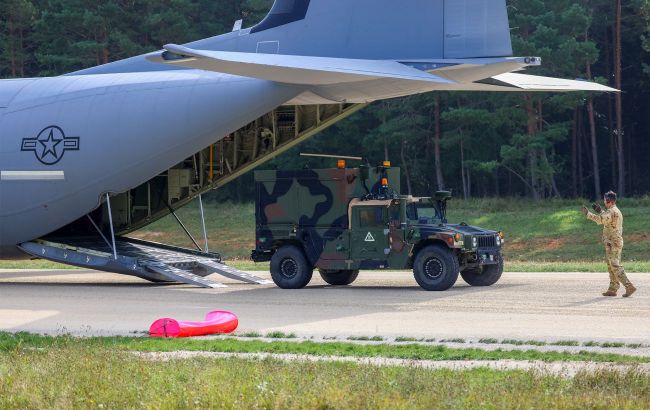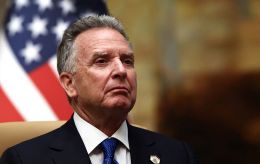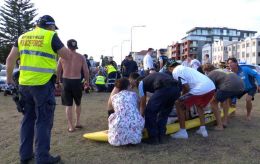US restoring former Roosevelt Roads naval base in sign of possible Venezuela operation
 Illustrative photo: US actively restoring naval bases in the Caribbean (Getty Images)
Illustrative photo: US actively restoring naval bases in the Caribbean (Getty Images)
The United States military has started reinforcing, restoring, and expanding the Roosevelt Roads naval base in Puerto Rico, which was closed about 20 years ago. This activity could indicate preparations for a strike on Venezuela, Reuters reports.
Roosevelt Roads, a former Cold War-era naval base, was shut down more than two decades ago. Construction is now underway, including clearing and restoring taxiways that lead to the main runway.

Satellite images show recent upgrades to a taxiway at Roosevelt Roads in Ceiba, Puerto Rico (Photo: Reuters)
Upgrading the taxiways may indicate the base is being prepared to host a large number of fighter jets and cargo planes, which could conduct frequent, intensive flights. Air defense systems and several dozen military tents for personnel have also been deployed.
Roosevelt Roads was one of the largest US Navy bases in the world. Its strategic location allows control over almost the entire Caribbean basin, which could support US military operations against Venezuela.

Tents set up near the runway at Roosevelt Roads (Photo: Reuters)
Military officials and experts confirmed to Reuters that the US is building and restoring facilities on two Caribbean territories. Alongside Roosevelt Roads, construction is underway at civilian airports in Puerto Rico and Saint Croix in the US Virgin Islands.
At Rafael Hernandez Airport in Puerto Rico, a munitions storage facility is under construction. Since such structures are not permanently located at civilian airports, these munitions could be used soon.
Similar work is happening at Henry E. Rohlsen Airport in St. Croix, where military facilities are being built. Experts note, however, that this does not necessarily indicate an attack on Venezuela; the facilities could support US Army operations against drug cartels.
"All of these things are, I think, designed to scare the pants off the Maduro regime and the generals around him, with the hope that it will create fissures," said Christopher Hernandez-Roy, Senior Fellow at the Center for Strategic and International Studies (CSIS).

Recent sightings of US military vessels and aircraft as of October 31 (Photo: Reuters)
The Pentagon and the Governor of Puerto Rico did not respond to requests for comment. Albert Bryan Jr., Governor of the US Virgin Islands, said through his office that he is unaware of any planned military operations in the near future.
Possible strike on Venezuela
As part of its anti-drug campaign in the Caribbean, US President Donald Trump labeled Venezuelan leader Nicolás Maduro as a chief "drug lord." Maduro is believed to lead the Cartel de los Soles, or "Cartel of the Suns." The organization is reportedly embedded within the Venezuelan military and is responsible for supplying 500 tons of cocaine annually to the US and Europe.
Two US media outlets reported on October 31, citing sources in the administration, that the US could strike Venezuela within days or even hours. The administration had identified targets and made relevant decisions. Trump personally denied these claims.
At the same time, the US has deployed a large force near Venezuela, including dozens of aircraft and warships, an aircraft carrier strike group, and amphibious assault ships with Marines. Maduro, in turn, appealed for help from allies, primarily Russia. A sanctioned Russian Il-76 aircraft reportedly arrived in Caracas on November 1. The plane could have delivered weapons to the Maduro regime.

